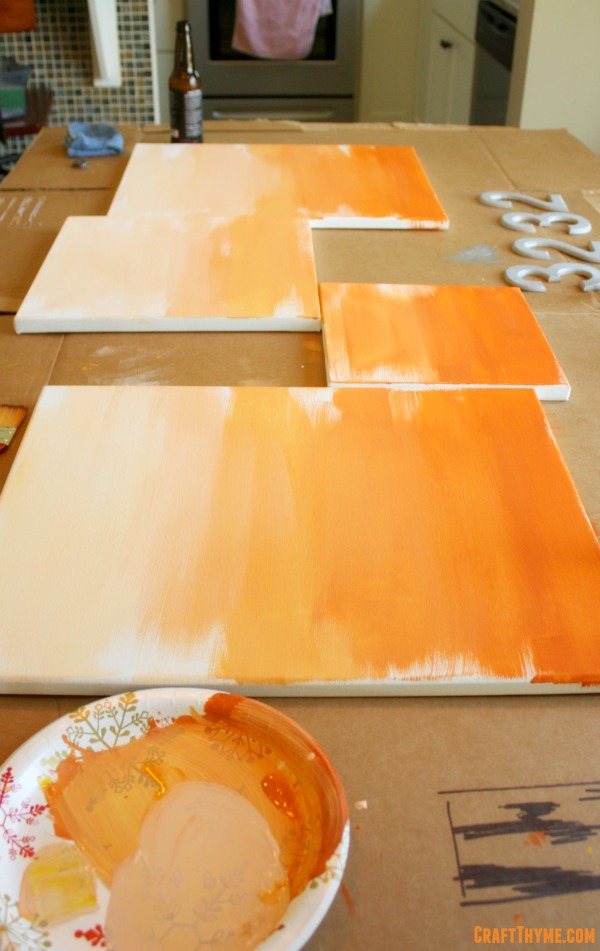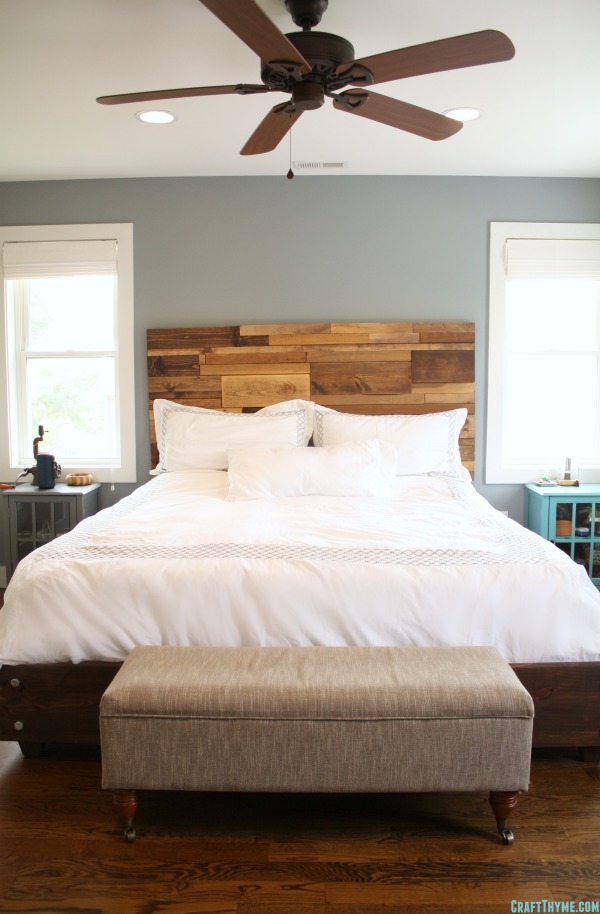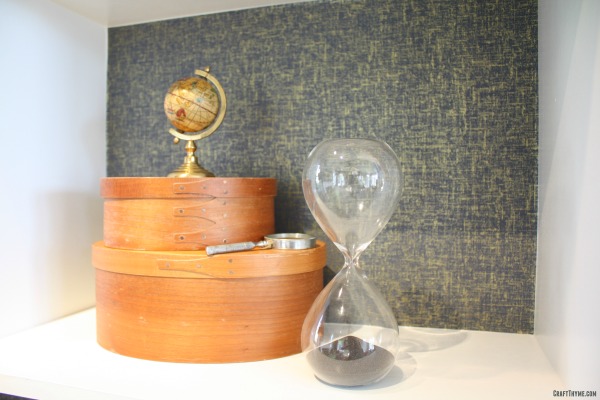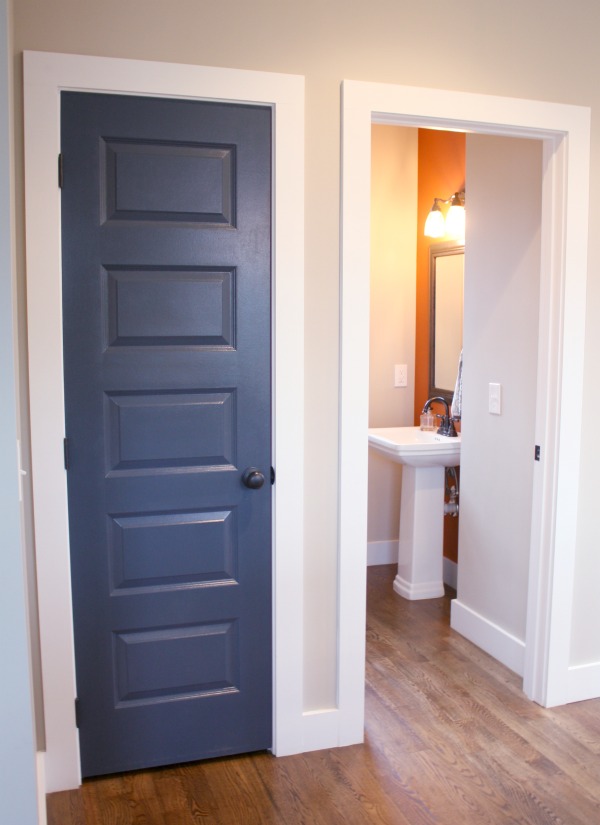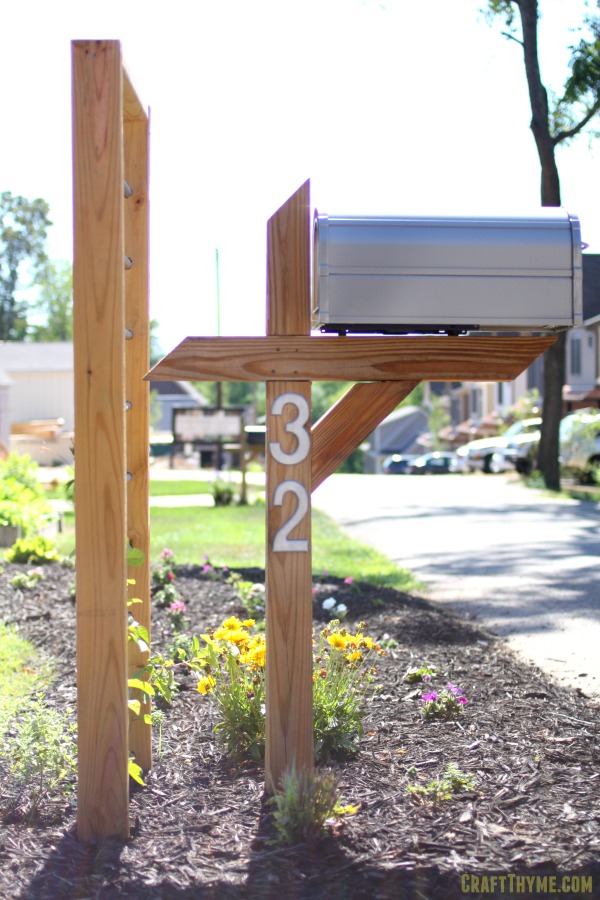
The exterior of our home has lots of galvanized metal finishes. Our outdoor lights, conduit porch railings, galvanized accented DIY trellis and planter boxes all have that metal finish. It was a no-brainer to continue to use the galvanized finish to accent our street numbers on the porch and mailbox. However, when I started researching modern looking metal numbers, oh holy hell! The cost! Even if we bought the most basic metal numbers* off Amazon. We were looking at close to $40.00 for four numbers! I can not imagine if you have one of those long street numbers and wanted to place it in more than one location. Enter faux galvanized metal finish to the rescue:
Galvanized Metal Finish: Super Easy Faux Finish!
Materials
- Craft Paint* (Cheap is fine here. We are painting numbers, not the Sistine Chapel)
- Brush*
- Wooden Numbers: We used 5″ numbers in a sans serif font (For a modern look). I am just going to tell you now that I can not, in good conscience, give you an affiliate link to wooden numbers. They are WAY cheaper at a local craft store. Think $1-$2 per number before the usual 40-50% off coupon.
- Finish Nails: For hanging.
- Paper towels or an old rag
Step 1: Slap it On
Yep, just paint a layer of straight silver. The wood is going to soak it up, so you might have to slap a couple of coats on.
Step 2: Mix and Match
Mix two different shades of silver, one lighter and one darker. The easiest way to do this is take a whatever surface you are using to mix paint (cardboard, paper plate, actual palette) and make two small pools of silver paint. Maybe 1-2″ in diameter. Then added 2 drops of black in one and 4 drops of white in the other. Mix and repeat if the colors are not about two shades off from the original. Always remember paint dries slightly lighter!
Step 3: Pattern Time
I had a chance to look at some pressed galvanized metal containers while I was at the craft store picking up the wooden numbers. You might take a gander at the floral section and see if they have any galvanized metal buckets. I always find faux finishing easier if I just saw a real life example. In case you can not find a real life example here is a decent picture from Andrew Beeston of what we are trying to achieve:
The easiest way to get the angular light and dark patches is to dip your brush and use the flat side to press into the number. I did the dark first and then went back and did the light color… Or maybe the other way around… It really does not matter except that you want hard edges and overlap, not a wet paint blend.
Step 4: On No! We don’t have pictures!
Yes, I failed to adequately document this last step, but it is sooooo easy. Once your layers of paint have dried you can do this final step to soften the paint strokes of step three and give it a bit of a weathered look. Pour a tiny bit of black paint out and mix it half and half with water. Quickly brush the black all over the surface of your letter. DO NOT PANIC, that you have just completely ruined your hard work. Count to 10 and then wipe the black paint mostly off the surface of the letter. It should just leave the finest glaze of darkness over the silver paint and knock off a little of the shine. Remember that galvanized metal is not super shiny!
If, for some reason, the black stuck to much just repeat the above step but with a watery silver. Remember that in faux finishing you can always just repaint any mistakes!
Step 5: Clean Fresh and Modern
Since the numbers weigh next to nothing we were able to simply use a single nail to affix them to the mailbox and porch. We choose to orient them in a straight vertical line to give a fresh, modern, vibe.






